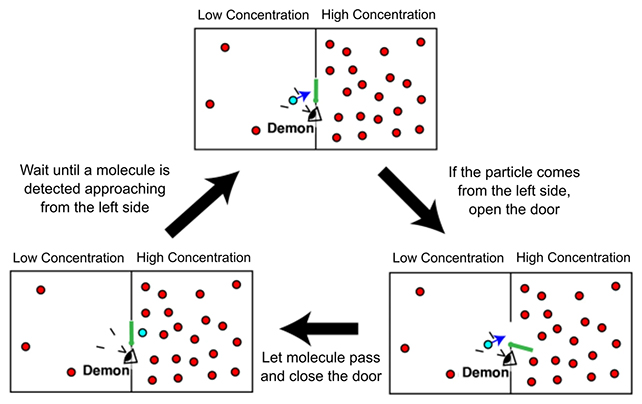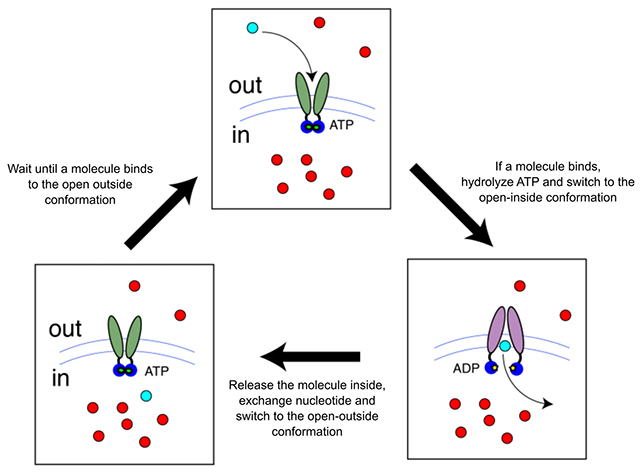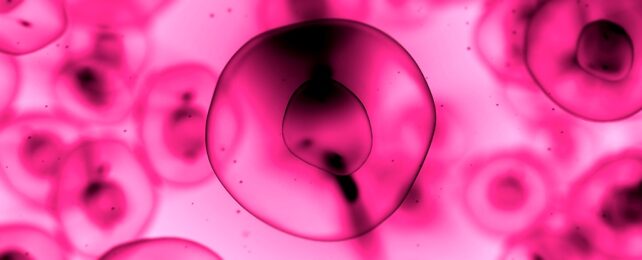Back in 1867, in an effort to test his thoughts on the emerging science of thermodynamics, physicist James Clerk Maxwell imagined an intelligent 'demon' sorting molecules between two containers based on their energy.
In 2023, a less diabolical version of Maxwell's fictitious demon may have been found.
According to a new study from researchers at the École Polytechnique Fédérale de Lausanne (EPFL) in Switzerland, proteins embedded in cell membranes called ATP-Binding Cassette (ABC) transporters have features that echo Maxwell's demon, allowing them to sort substrates.
In fact, these ABC transporters have been around for billions of years and can be found in almost every living organism. What's more, they fit within natural thermodynamic laws.
It turns out that Maxwell was unknowingly describing a fundamental aspect of life's very building blocks.

"We show that ABCs are true Maxwell demons," says Paolo De Los Rios, head of the Laboratory of Statistical Biophysics at the EPFL.
"The measurement, feedback, and resetting steps of Maxwell demons, the need for energy, and a description in terms of thermodynamics of information are all emerging features of the model."
The demon described by Maxwell controlled a door between two containers of gas, allowing energetic molecules to go in one direction and cooler molecules to go in another in defiance of the equilibrium that would otherwise even out their distribution.
As a part of the system (and, magical little devil, unreliant on energy himself), the demon would create energy from the resulting temperature difference from absolutely nothing.

Of course the laws of thermodynamics state energy can't actually come from nothing because work would be needed to measure and remember particle speed.
However, discrepancies like the different temperatures in Maxwell's boxes are often seen in nature such as differing molecular concentrations inside and outside of a cell.
Scientists have previously suspected something like Maxwell's demons might be involved with the energy intensive process of transporting molecules against their natural concentration gradient flow. But this is the first time the information framework of such a system has been described and modeled in a way that harkens back to Maxwell's famous thought experiment.
What the researchers propose is that the ABC transporters on cell membranes control molecule flow in the same way as Maxwell demons, using energy from ATP (adenosine triphosphate) molecules to power the process.
The biochemical structure of the transporters then do the measuring, feedback and resetting, depending on the position of the molecule being transported as seen in the diagram above.
It's an important discovery, because it teaches us more about how cells are able to regulate their environments and function as they need to, by managing molecule import and export, much like a tiny demon at a cell's door.
While the researchers did make some simplifications in order for their calculations to work, they're confident that what they've outlined in their study paper can be applied to more complex systems – systems which are widespread in nature.
"This approach serves as a helpful conceptual framework for understanding the otherwise complex biochemical circuitry of these systems," write the researchers in their published paper.
The research has been published in Communications Physics.
